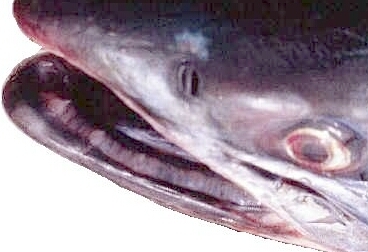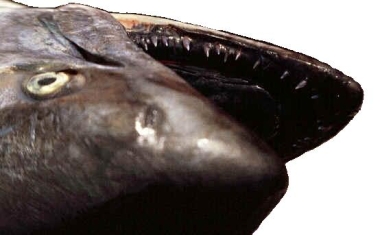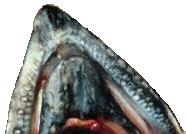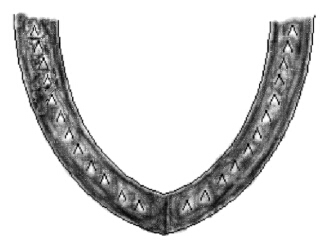
Is it a coho or Chinook?
Two commonly caught species of salmon are coho and Chinook. Fishing regulations require anglers to correctly identify salmon species as restrictions such as legal lengths and seasons often vary based on the species.

Coho "silver" salmon (Oncorhynchus kisutch)
- The coloration on the lower jaw exhibits a distinct banding pattern. Outside the base of the teeth there is a dark band, at the base of the teeth is a white or very light band, and inside of the base of the teeth is another dark band.
- Bone segments in the fin rays of the tail can be felt by lightly running a fingernail along the top of the fin ray.
- Teeth are sharp and firmly set in the jaw.
- Tail may or may not have "round" spots in the upper lobe. Occasionally, coho will have spots in both lobes of the tail.
- "Small" spots may or may not be present on the back.
Chinook "king" salmon (Oncorhynchus tshawytscha)
- The lower jaw is a uniform dark coloration (in some cases may be mottled).
- Bone segments in the fin rays of the tail CANNOT be felt by lightly running a fingernail along the top of a fin ray.
- Teeth are sharp and firmly set in the jaw.
- Tail may or may not have "round" spots in both the upper and lower lobe.
- "Large" wavy spots are usually present on the back
Dos and don'ts for salmon identification:
- DO use the gum line on the LOWER jaw for identifying a salmon. It is the single best feature to use. It is also the characteristic that is most likely to be used by enforcement officers in deciding whether a violation has occurred and if a citation should be issued.
- DO carefully release any salmon if you are unable to make a positive identification and the fish may be a prohibited species.
- DON'T rely on body color or spots to identify a salmon caught in the ocean. Salmon in the ocean phase of their life cycle will not show the colors that are common after they enter the estuaries and rivers. All ocean salmon are primarily silver in color, and there can be wide variations in spots and color both within and between species.
- DON'T use the presence or absence of a hooked nose as an identifying characteristic. A hooked nose is a common secondary sexual characteristic of male salmon as they approach maturity, and is present in all species.
- DON'T use the size of a salmon to determine the species. Although the Chinook grows to be the largest of our salmon, with fish over 50 pounds being caught on occasion, the average size range of an ocean caught Chinook is 25-30 pounds. On the other hand coho have been observed in the 12-15 pound range.
Header photo by Frank Taubenkrau






